Name Philippe Parreno Role Visual artist | Music director The Invisible Boy | |
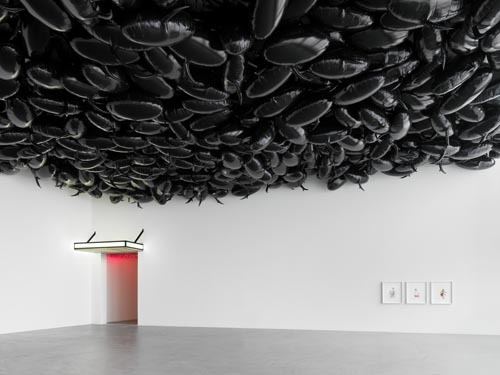 | ||
Movies Zidane: A 21st Century Portrait, June 8, 1968 Nominations Cesar Award for Best Documentary Books Drift: The Hammersmith and City, Doug Aitken, CHZ Philippe Parreno, Speech bubbles, Snow Dancing Similar People | ||
Philippe parreno may
Philippe Parreno is a French artist who lives and works in Paris, France.
Contents
- Philippe parreno may
- Conversation between philippe parreno and carlos basualdo
- Early life and education
- Work
- Collaboration
- Selected Key Works
- Selected Solo Exhibitions
- Selected Group Exhibitions
- Galleries
- Collections
- Select Press Coverage
- References

Conversation between philippe parreno and carlos basualdo
Early life and education
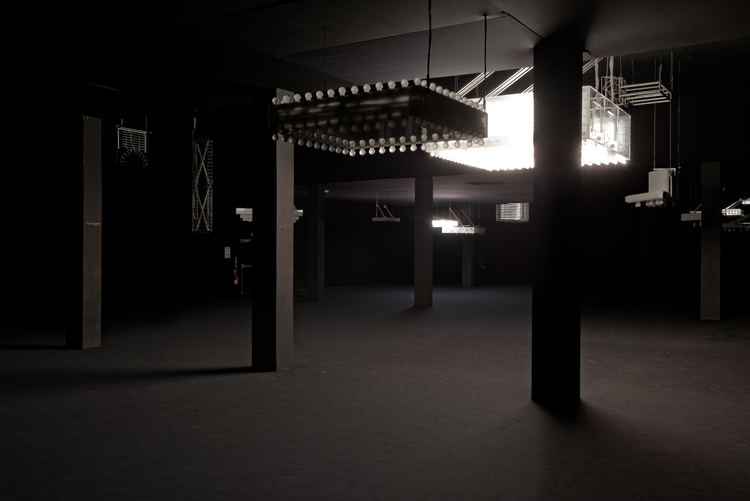
He studied at the Ecole des Beaux-Arts in Grenoble from 1983 until 1988 and at the Institut des Hautes Etudes en arts plastiques at the Palais de Tokyo, Paris from 1988 until 1989.
Work
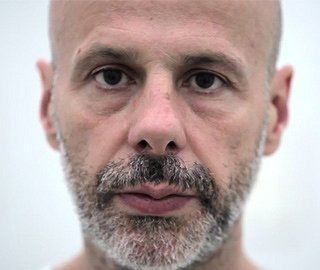
A key artist of his generation, Philippe Parreno has gained critical acclaim for his work that spans a diversity of media, including film, sculpture, drawing, and text. He is considered part of a close-knit group of European artists who came of age together in the 1990s — among them Dominique Gonzalez-Foerster, Liam Gillick, Douglas Gordon and Pierre Huyghe. Taking the exhibition as a medium, Parreno radically redefined the exhibition experience by exploring its possibilities as a coherent “object” rather than as a collection of individual works. To this end, he conceives his shows as a scripted space where a series of events unfolds, guiding the visitor through the galleries by the orchestration of sound and image. This is a question of creating, in a given volume, as much space and time as possible by folding and unfolding the space onto itself.
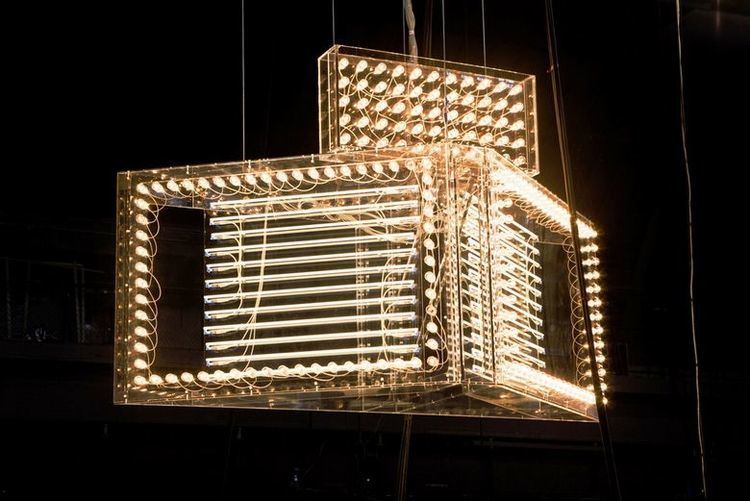
Parreno used this format in his 2013 exhibition Anywhere, Anywhere Out Of The World [1] where he radically transformed the monumental space of the Palais de Tokyo in Paris. Given carte blanche by the gallery, Parreno turned the building itself into a living constantly evolving organism using sound, image and performance to guide the visitor on a journey through his works, both old and new. The exhibition was orchestrated along the lines of a dramatic composition where the spectral presence of objects, music, lights, and films guide and manipulated the visitor’s experience transforming this monologue into a polyphony.

In Dancing around the Bride [2] in 2012 at the Philadelphia Museum of Art curated by Carlos Basualdo in collaboration with Erica F. Battle, Parreno acted as a metteur-en-scène (orchestrator), using the artworks of John Cage, Merce Cunningham, Jasper Johns, Robert Rauschenberg, and Marcel Duchamp to invoke time and motion. At his eponymous 2010 exhibition [3] at the Serpentine Gallery, spectators moved in groups from room to room following a soundtrack.

Sound was again a key element in the 2013 exhibition, The Bride and The Bachelors [4], at the Barbican, London. The varied sequence of Parreno’s subtle orchestration of live and pre-recorded sound from the works of Cage, Cunningham, Johns, Rauschenberg and Duchamp was arranged in concert with live dance performances, enabling the exhibition to change over time.

During Art Basel, 2012, Parreno presented two major new works at Fondation Beyeler – Marilyn (2012) and C.H.Z. (Continuously Habitable Zones) (2011) [5].Marilyn was subsequently shown at Parreno’s first solo exhibition in Russia at the Garage Center for Contemporary Culture, Moscow [6] and at the 55th Venice Biennale at François Pinault's museum, Palazzo Grassi.
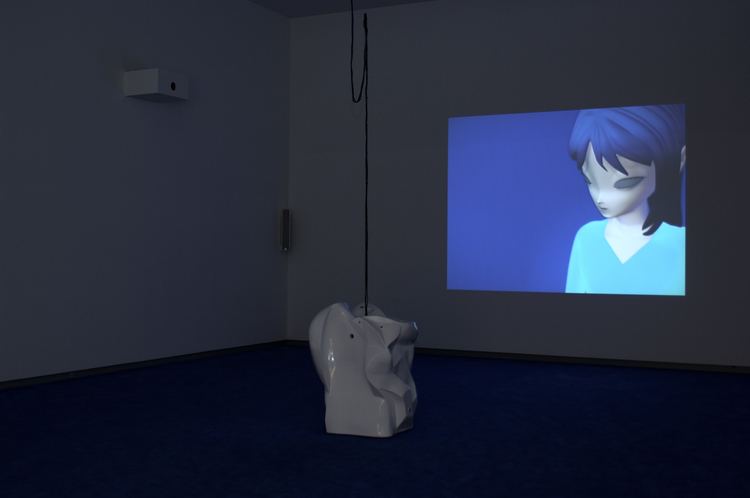
H {N)Y P N(Y} OSIS, Parreno’s first major U.S. exhibition, ran from June until August 2015 within the monumental interior of Park Avenue Armory’s Wade Thompson Drill Hall, New York and transformed the traditional exhibition experience through an interplay of film, sculpture, and the spectral presence of sound and light.
October 2015 - February 2016, Parreno presented Hypothesis, at HangarBicocca in Milan, his first survey exhibition in Italy. The show, curated by Andrea Lissoni, was inhabited by a series of key pieces together with recent works and music according to a mise en scène devised by Parreno.
In October 2016 [until April 2017] Parreno undertook the prestigious Hyundai Commission for the Turbine Hall at London's Tate Modern [7]. Entitled Anywhen [8], the commission transformed the Turbine Hall into an experience that played with time and space, guiding the public through constantly changing stages of light, sound and moving elements. Curated by Tate's Andrea Lissoni, Senior Curator, International Art (Film), with Vassilis Oikonomopoulos, Assistant Curator, it was the second annual Hyundai Commission, a series of site-specific works created for the Turbine Hall [9] by renowned international artists.
December 2016 - March 2017 Parreno presented Thenabouts at ACMI in Melbourne, a singular retrospective of his filmic works as a cinematic ensemble. The exhibition was controlled live by a gallery technician, playing with temporal and spatial boundaries that guided the visitor through a complex journey of images, duration, and memory.
Until 7 May 2017, Parreno is exhibiting A Time Coloured Space at the Serralves Museum of Contemporary Art in Porto. Spanning the museum's entire space the exhibition is curated by the museum's director Suzanne Cotter, and features some of Parreno's most emblematic works dating back to the 1990's, as well as new works created especially for the context.
Collaboration
Collaboration is integral to Parreno’s work. In June 2006, Universal released a feature-length documentary directed by Parreno and Scottish artist Douglas Gordon entitled Zidane: A 21st Century Portrait, which premiered out of competition at the 2006 Cannes Film Festival. Using 17 cameras, this unique football film follows legendary French midfielder Zinedine Zidane throughout an entire Real Madrid vs Villarreal match in front of 80,000 fans at the Santiago Bernabéu Stadium. Two of the cameras were borrowed from the U.S. army and have the largest zoom available. The film tracks Zidane’s every move on and off the ball, in the thick of the action. Subtitles includes the player’s thoughts and observations on his playing career. The motion unfolds in a flow accentuated by an emotive original score by Scottish rock band, Mogwai.
In 2007 Parreno directed and co-curated with Hans Ulrich Obrist, a group exhibition, Il Tempo del Postino (Postman Time) [10] for the Manchester International Festival, which then showed at Art Basel, 2009. Organised by Fondation Beyeler and Theater Basel it was devised as a group exhibition that would occupy time rather than space with the artists involved presenting a sequential display of time-based art on the theatre stage. By focusing on time-based work, this unique group show aimed to redefine how the visual arts can be experienced. Set in classic theatre architecture, it transformed the established exhibition model into an exhilarating, shared audience experience. More than fifteen artists collaborated in this project including Doug Aitken, Matthew Barney & Jonathan Bepler, Tacita Dean, Trisha Donnelly, Olafur Eliasson, Liam Gillick, Dominique Gonzalez-Foerster, Douglas Gordon, Carsten Höller, Pierre Huyghe, Koo Jeong-A, Philippe Parreno, Anri Sala, Tino Sehgal, Rirkrit Tiravanija, Thomas Demand, and Peter Fischli / David Weiss.
In 2012 Parreno collaborated with artist Liam Gillick on To the Moon via the Beach [11]. Shown at The Amphitheatre in Arles, this was a piece concerning work, production, and change, with the title reflecting its shifting nature and the promise of a journey. On entering the exhibition, visitors encountered an area covered in tons of sand. Over four days, this ‘beach’ area was transformed by sand sculptors into a moonscape, which formed a constantly changing backdrop to a series of 22 artists’ projects. The whole process was made visible with equal importance placed upon the production, presentation, and exchange of ideas.
In 2014 Parreno was involved in a unique collaboration with a number of artists and curators, including Tino Sehgal, Liam Gillick, Hans-Ulrich Obrist, Asad Raza, and Pierre Boulez, for which he was also a curator. The exhibition Solaris Chronicles [12] at the LUMA Foundation Arles Campus was presented in two phases and examined, through a series of artistic interventions and projects, the creative vision of architect Frank Gehry. Centred on large-scale models of many of Gehry’s seminal works, the constantly shifting mise-en-scène created by the artists formed a bridge between art and architecture, transforming the usual relationship and collaborative processes between the two practices.
Selected Key Works
Anywhen (2016)
Parreno’s most recent film, Anywhen was created for his Turbine Hall commission of the same name, which opened at the Tate Modern (London) on 4 October 2016. The film is a performance by actor and ventriloquist Nina Conti who speaks a monologue, her mouth not moving. As Conti speaks we see images of a bioluminescent cephalopod moving gracefully across the screen, almost dancing, and looking back at us as we watch the film.
Speaking words that Parreno has used before in texts, interviews, conversations, entwined with fragments from James Joyce, Conti presents ideas of time and automata: “The mask is the first automaton”; “Eternity in perpetuity.” She ends with a premonition: “There’s no way to stop the upcoming tragedy.”
Li Yan (2016)
Li Yan depicts a city suspended between day and night, in the liminal hour that is dusk or dawn. Descending through the clouds, the camera enters an uncannily vacant city. Then we see a young woman walking alone through a park. The amplified sound implies a sense of movement through a series of fixed shots. These sounds, along with small disturbances in the environment, hint at an unseen, alien presence. Shot on location in New York City, the film is a dream, or a series of memories, that incorporates images from several of Parreno’s earlier films: C.H.Z., Credits, and The Boy From Mars. Recalling another of Parreno’s New York films, the young woman playing Li Yan is the mother of the boy who features in the film InvisibleBoy.
The Crowd (2015)
The Crowd was shot inside the Drill Hall of the Park Avenue Armory and later presented on the occasion of a solo show the artist held at the New York venue from 11 June – 2 August 2015. The camera films 300 New Yorkers, some of whom have been hypnotized. As they move through the space their attention seems to be drawn to the sound of a piano, and this is precisely the event that drives all these individuals to gather together around a more luminous area where hypothetically an invisible pianist is producing the melody. Shadows, bodies of smoke and clouds of suspended particles weave around images of bodies in movement, ethereal presences in the space. The entire scene seems to evoke the phantasmagoria, an ancient technique based on the illusionary interplay of light and smoke that was employed in nineteenth-century pre-cinema performances.
The Crowd illustrates the relationships between presence and absence that are woven throughout Parreno’s oeuvre: on one hand, the presence of shade in the space seems to substitute that of the individuals – captured in an almost otherworldly experience – on the other the artist reflects on the viewer’s experience within an exhibition in which the confines between those who are observing and the object of their observation become increasingly evanescent.
With a Rhythmic Instinction to be Able to Travel Beyond Existing Forces of Life (2015)
The new automaton (a form of film recorded on a high density lighted grid) was on display at the Metropolitan Museum of Art in New York during the summer and fall of 2015. The film consists of a sequence of stills resembling fossils displayed in rapid succession as it was originally displayed during exhibits in Great Britain during 2014.
Marilyn (2012)
Marilyn is the portrait of a ghost. The film conjures up Marilyn Monroe through a phantasmagoric séance in a suite at the Waldorf Astoria hotel in New York, where she lived in the 1950s. Phantasmagoria was an early form of cinema, a kind of circus act where conjurers would use lighting and artificial smoke to summon an ethereal apparition in an attempt to bring back the dead.
Here, the image is taken from the point of view of the deceased Marilyn. The film reproduces Marilyn Monroe’s presence by means of three algorithms: the camera becomes her eyes, a computer reconstructs the prosody of her voice and a robot recreates her handwriting. The Hollywood icon is carnated in an image that is in fact an automaton, something resembling a human, and yet not quite real.
C.H.Z (Continuously Habitable Zones) (2011)
C.H.Z. stands for “Continuously Habitable Zones,” an astrobiological term used for planets offering viable conditions for life to grow. Recent scientific studies have shown that life would be more likely to develop on a planet with two or more small suns (dwarf suns) rather than on a planet with one very bright sun. In such zones the saturated photosynthesis would produce black vegetation. For this film, Parreno collaborated with landscape architect Bas Smets to design the set, an extraterrestrial landscape near Porto, Portugal, that continues to grow to this day. Merging science and fiction, the landscape is practically void of light, presenting a disorientating black environment. The landscape is both alien and familiar - unclear as to whether this is a new inhospitable planet or the aftermath of some catastrophic event on Earth. Alongside the film, Parreno created a series of intricate, detailed ink drawings.
Invisibleboy (2010)
A portrait of an illegal immigrant Chinese child through the imaginary monsters that incarnate his fears and anxieties. A fiction tacked onto a reality. The reality of the illegal aliens in Manhattan’s Chinatown. People who are called ‘invisible’. This portrait gives an image to someone who doesn’t have one and, at the same time, a real person gains the social identity he’s missing by becoming a fictional character. High definition images make sensible impressions of a city as we cross over to the imaginary. Fantasy and social realism, fiction and documentary overlap. Like Superman or Spiderman, Invisibleboy is a contemporary superhero produced by the city today. His monsters appear slowly, at the beginning as scratches on the film stock, someplace in between the diegesis and the actual world. They are the boy’s superpowers. This is a tale in which a boy’s paranoia produces a topographic vision of a city.
June 8, 1968 (2009)
A film which reenacts images taken by Magnum photographer Paul Fusco of the train voyage that transported assassinated Senator Robert Kennedy’s corpse from New York to Washington D.C. on June 8, 1968. The film takes the point of view of the dead. A tracking shot moves through rural and urban American landscapes. People who have come to pay their respects line the tracks, staring as if in an immobile trance. These silent characters watch a moment in history pass by and form a community with the spectators of the film around this invisible body. The past comes back to haunt us in an image.The size of the projection varies from 10 to 15 metres in width in order for the protagonists to be the same scale as the viewers.
Marquees (2006 – ongoing, light sculptures)
Since 2006 Parreno has been creating light works that resemble the type of illuminated canopies that feature on theatres and old fashioned cinemas. The glowing pieces span the realms of sculpture, architecture and art acting as ambiguous gateways to the outside world.
Zidane: A 21st Century Portrait (2006)
In June 2006, Universal released a feature-length documentary directed by Parreno and Scottish artist-filmmaker Douglas Gordon entitled Zidane: A 21st Century Portrait, which premiered out of competition at the 2006 Cannes Film Festival. Using 17 cameras, this unique football film follows legendary French midfielder Zinédine Zidane throughout an entire Real Madrid vs Villareal match in front of 80,000 fans at the Santiago Bernabéu Stadium. Tracking Zidane’s every move on and off the ball, in the thick of the action and on the periphery it includes the player’s thoughts and observations on his playing career, the intense excitement of the watching crowd, and is accompanied by an emotive score by Scottish rock band, Mogwai. Produced by Anna Lena Vaney, Sigurjon Sighvatsson and Victorien Vaney.
The Boy from Mars (2003)
In 2001 Pareno was invited by his friend the artist Rirkrit Tiravanija to build a common space for The Land project in Chiang Mai, Thailand. A building that generates its own energy through a pulley system run by buffalo. Designed by architect François Roche, it was constructed solely in order to be filmed. Points of light appear then fly away silently. The film searches for the origin of these bursts of energy, then gets lost, becomes fascinated by reflections of the sun, takes in frames full of sky, then lingers on the buffalo tethered to this strange building. In the end the screen goes black and Devendra Banhart sings. The building generated the electricity needed to make the film. This is the story of a film that produced a building, architecture that provided the scenario for a film and a film that produced a song. The film is one element of a two-headed mutant, one half of inseparable twins, reality and the image, who share the same body. Science fiction or rather architecture fiction.
No Ghost Just a Shell (1999 – 2003)
No Ghost Just a Shell was initiated by Parreno and Pierre Huyghe in 1999. They acquired the copyright for a figure called 'Annlee' and her original image from the Japanese agency ‘Kworks’, which develops figures (almost actors) for cartoons, comic strips, advertising and video games of the booming Japanese Manga industry. 'Annlee' was a cheap model: the price of a Manga figure relates to the complexity of its character traits and thus its ability to adapt to a story-line and 'survive' several episodes. 'Annlee' had no particular qualities, and so she would have disappeared from the scene very quickly. "True heroes are rare and extremely expensive …" (Parreno). Buying 'Annlee' rescued her from an industry that had condemned her to death.
The No Ghost Just a Shell project was intended to go on for a number of years. It offered 'Annlee' free of charge to a series of artists, use her for their 'own' stories. She thereby became the sign of a collectivity.
Speech Bubbles (1997 - ongoing)
Parreno has created installations of thousands of helium balloons in the shape of cartoon speech bubbles in a number of his exhibitions. These speech bubbles were originally created for trade union members to write their own slogans during a demonstration. Parreno has also presented them as a cloud of bubbles that cover the ceilings of expansive spaces. Empty of words and collecting on the ceiling, they suggest a potential or suspended discourse that may or may not occur.
Selected Solo Exhibitions
2017
Philippe Parreno: A Time Coloured Space, Serralves Museum of Contemporary Art, Porto, Portugal, [13] - 3 February - 7 May 2017
2016
Philippe Parreno: Thenabouts, ACMI (Australian Centre for the Moving Image), Melbourne, Australia [14]- 6 December 2016 - 13 March 2017
Philippe Parreno: Anywhen, the 2016 Hyundai Commission for the Turbine Hall, Tate Modern, London [15] - 4 October 2016 - 2 April 2017
2015
Hypothesis, HangarBicocca, Milan, Italy [16] - 22 October 2015 - 14 February 2016
H {N} Y P N {Y} OSIS, Park Avenue Armory, New York, USA [17] - 11 June 2015 - 2 August 2015
2013
Anywhere, Anywhere Out of the World, Palais de Tokyo, Paris, France [18] - 23 October 2014 - 12 January 2014
Philippe Parreno, curated by Hans Ulrich Obrist, The Garage Center for Contemporary Culture, Moscow, Russia [19]
2012
Philippe Parreno, Fondation Beyeler, Basel, Switzerland [20]
2010
Philippe Parreno, Serpentine Gallery, London, UK [21]
Philippe Parreno, CCS Bard, Bard College, Annandale-on-Hudson, USA [22]
From November 5 Until They Fall Down, Castello di Rivoli, Torino, Italy [23]
2009
November, Irish Museum of Modern Art, Dublin, Ireland [24]
May, Kunsthalle Zurich, Zurich, Switzerland [25]
8 Juin 1968, Centre Pompidou - Musée National d’Art Moderne, Paris, France [26]
Selected Group Exhibitions
Forthcoming 2017
57th International Art Exhibition, La Biennale di Venezia, Venice, 13 May – 26 November 2017
2016
The Eighth Climate (What Does Art Do?), 11th Gwangju Biennale, Korea
2015
All The World’s Futures, 56th International Art Exhibition La Biennale di Venezia, Venice
2014
Lucas Burckhardt and Cedric Price - A stroll through a fun palace curated by Hans Ulrich Obrist, Pavilion of Switzerland, 14th International Architecture Exhibition, la Biennale de Venezia, Venice, Italy
Solaris Chronicles, LUMA Foundation, Arles, France [27]
Lucius Burckhardt and Cedric Price: A stroll through a fun palace, curated by Hans-Ulrich Obrist, Pavilion of Switzerland at the 14th International Architecture Exhibition, la Biennale di Venezia [28]
2013
Light Show, Hayward Gallery, London, UK [29]
The Bride and the Bachelors: Duchamp with Cage, Cunningham, Rauschenberg and Johns curated by Carlos Basualdo, Barbican Art Gallery, Barbican Centre, London, UK [30]
2012
Dancing around the Bride: Cage, Cunningham, Johns, Rauschenberg, and Duchamp curated by Carlos Basualdo in collaboration with Erica F. Battle, Philadelphia Museum of Art, Philadelphia, USA [31]
2011
ILLUMinations, 54th Venice Biennale, 2011, Venice, Italy [32]
Art of Communication: Anri Sala, Yang Ah Ham, Philippe Parreno, Jorge Pardo, National Museum of Contemporary Art (South Korea) [33]
2010
Van Bij de Buren-Belgie, Kasteel Keukenhof, Lisse, Netherlands
The 4th Auckland Triennial, Last Ride in the Hot Air Balloon, New Zealand
2009
Il Tempo del Postino, Art Basel, Basel, Switzerland
2008
theanyspacewhatever, Guggenheim Museum, New York, USA [34]
Galleries
Philippe Parreno is represented by Pilar Corrias Gallery [35]; Air de Paris, Paris [36]; Esther Schipper Gallery, Berlin [37]; Barbara Gladstone, New York [38]; and 1301 PE, Los Angeles [39].
Collections
His work is included in the collections of many institutions such as the Centre Georges Pompidou, France; 21st Century Museum of Contemporary Art, Kanazawa, Japan; the Museum of Modern Art (MoMA), New York; the Walker Art Center (USA); Musée d'Art Moderne de la Ville de Paris, France; the San Francisco Museum of Modern Art, USA; the Guggenheim Museum New York, USA; and Tate Modern, London.
Select Press Coverage
2016
The Guardian Interview with Philippe Parreno, December 2016
New Scientist Review with comments from Philippe Parreno of Philippe Parreno: Anywhen the 2016 Hyundai Commission for the Turbine Hall, October 2016
M, Le Monde Interview with Philippe Parreno, October 2016
The New Yorker Interview with Philippe Parreno, October 2016
The Art Newspaper Interview with Philippe Parreno, October 2016
The Guardian Review of Philippe Parreno: Anywhen the 2016 Hyundai Commission for the Turbine Hall, October 2016
Numero France Interview with Philippe Parreno, September 2016
2015
The New York Times Interview with Philippe Parreno, June 2015
[40] ArtReview, Interview with Philippe Parreno, October 2015
2014
The White Review Interview with Philippe Parreno, September 2014
Artforum Review of Anywhere, Anywhere Out of the World at the Palais de Tokyo, January 2014
2013
Financial Times Review and podcast of Anywhere, Anywhere Out of the World at the Palais de Tokyo, 22 November 2013
Le Monde Review of Anywhere, Anywhere Out of the World at the Palais de Tokyo, 1 November 2013
The Guardian - Review of Anywhere, Anywhere Out of the World at the Palais de Tokyo, 30 October 2013
Art Info - Interview with Philippe Parreno, 26 October 2013
La Libération Review of Anywhere, Anywhere Out of the World at the Palais de Tokyo, 24 October 2013
Wallpaper - Interview with Philippe Parreno, October 2013
frieze - My Influences - Interview with Philippe Parreno, October 2013
Interview - Interview with Philippe Parreno, October 2013
The Moscow News - Review of Marilyn at Garage Center for Contemporary Culture, 11 March 2013
Time Out London - Review of The Bride and the Bachelors at the Barbican Art Gallery Review, 5 March 2013
The Sunday Times - Review of The Bride and the Bachelors at the Barbican Art Gallery, 17 February 2013
The Guardian - Review of The Bride and the Bachelors at the Barbican Art Gallery and short film interview with Philippe Parreno, 15 February 2013
The Times - Review of The Bride and the Bachelors at the Barbican Art Gallery, 15 February 2013
Mousse - Conversation between Philippe Parreno and Anri Sala, February 2013
2012
New York Times - Review of Dancing Around the Bride at the Philadelphia Museum of Art, 7 December 2012
New York Times - Review of Dancing Around the Bride at the Philadelphia Museum of Art, 31 October 2012
The Art Newspaper - Review of Philippe Parreno at the Fondation Beyeler, Basel, Switzerland, 15 June 2012
2011
Art Review - Review of Philippe Parreno at the Serpentine Gallery, March 2011
Art Forum - Review of Philippe Parreno at the Serpentine Gallery, March 2011
2010
Daily Telegraph - Review of Philippe Parreno at the Serpentine Gallery, 30 November 2010
The Guardian - Interview with Philippe Parreno, 15 November 2010
Modern Painters - Interview with Philippe Parreno, October 2010
2007
The Guardian Blog - Review of Il Tempo del Postino at the Manchester International Festival, 5 July 2007
